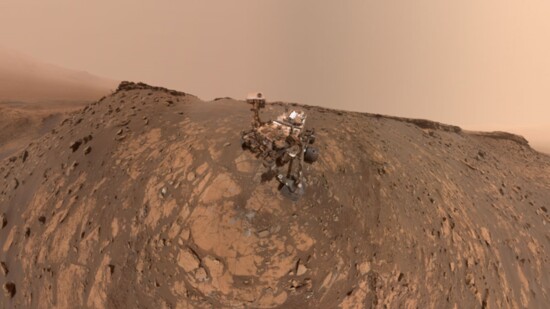For those that live in the greater Conroe area, it is commonplace to think of space and Houston synonymously. Many proudly refer to Houston as "Space City," most have visited Space Center Houston at least once, and everyone has heard the famous phrase "Houston, we have a problem." Even the beloved song "Deep in the Heart of Texas" begins with an ode to the night sky. Many may not know that, just like in days past, Houston is at the forefront of pushing the bounds of human exploration of the universe.
Dr. Gérman Martínez came to the United States 12 years ago from Spain to participate in that exploration. While his official bio says he "has a diverse background in data analysis, numerical modeling, instrument development, and laboratory work," he refers to himself as a weatherman—but on Mars. Dr. Martínez is a staff scientist at the Lunar and Planetary Institute and works with NASA on Mars Rovers, Curiosity, and Perseverance. His research centers around contributing to the prediction of weather on the red planet. He makes the distinction between prediction and contributing to prediction purposely because he says, so far, they cannot actually predict the weather very well.
What is the weather like on Mars? It's dusty. Dr. Martinez compares the dust on Mars to water vapor on Earth. NASA's Mars Science Laboratory (MSL) mission, of which Dr. Martínez is a team member, is busy learning how the dust cycle there works. They want to know what times of the year dust storms occur, where they will happen, and what time of day they are most likely to appear. If NASA is to send humans to Mars, forecasting the weather 225 million miles away is a milestone toward achieving that end.
After the last few tumultuous years, investment in space exploration may seem like a frivolous pursuit. Still, Dr. Martínez advocates that it is a fundamental scientific field of study that contributes economically to the area and, more generally, to humanity at large. In addition to obvious benefits, like the jobs provided to locals, the research being done by scientists to land people on Mars will almost certainly improve technology in other industries and the lives of everyday people.
The research completed during the space race resulted in new and improved instruments in the medical field and materials for construction projects. A more obvious contribution is the improvements made to satellites. This led to better GPS and an improved ability to predict and report imminent natural disasters like tsunamis, which Dr. Martínez says saves lives.
When asked what the most unexpected thing he has encountered in his research is, Dr. Martínez says, "That's a tough question because my research being about Mars means that I am never sure of what I will find."
Part of what he likes best about his work is incrementally filling in knowledge gaps, but building bridges between the known and the unknown is not something he does in isolation. It is the work of a global community that happens to meet once a year in, of all places, The Woodlands, Texas.
The 54th Lunar and Planetary Science Conference occurred March 13th -17th at The Woodlands Marriott. Dr. Martínez calls it the most important lunar and planetary science conference in the United States and the world. As space science exploded after the moon landing, the conference played a massive role in gathering and sharing knowledge between scientists from around the globe. This year Dr. Martínez presented on the environmental science data collected by the rover Curiosity during its past ten years on Mars.
The conference being held in the Houston area is no coincidence. The Lunar Sample Laboratory Facility at Space Center Houston houses the world's most extensive collection of moon rocks on public display. The samples brought from the moon during Apollo missions served in part as the genesis of the thriving planetary science community we see today. When the time comes, Dr. Martínez says Houston also will be home to the samples brought from Mars.
In true Mar's weatherman form, Dr. Martínez says his favorite part of Texas is, shockingly, the weather. However, his contributions to pushing the boundaries of human knowledge make him a truth sharer in the past, present, and future of the Texan legacy of space exploration.



